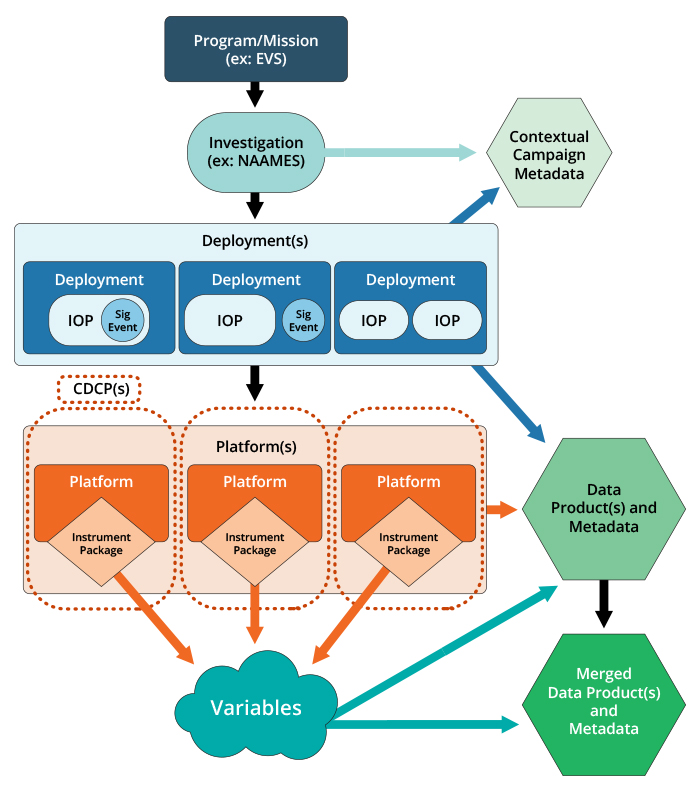ADMG Airborne and Field Data Inventory Definitions
The Airborne Data Management Group (ADMG) uses the formalized definitions listed below for building the Catalog of Archived Suborbital Earth science Investigations (CASEI).
Consistent terminology is required for organization and clear communication of the variety of airborne and field investigation metadata. These definitions establish ADMG's terminology for the benefit of inventory users. Where possible, definitions are made to agree with those within the communities served by ADMG and some may be similar to those in NASA's Earth Observing System Data and Information System (EOSDIS) Glossary. Note: ADMG definitions may or may not match similar terms used by other entities within or outside NASA.
Many terms are related and represent a hierarchical organizational investigation information structure. These relationships are shown in the diagram representing the information model used to develop the CASEI metadata contents.
Please provide any feedback to questions about these definitions to ADMG at admg@uah.edu.
Inventory Term Definitions
Mission
A NASA-funded effort, project or program involving one or more satellite-based instruments and/or field investigations. Missions target a relatively broad set of science requirements, while supporting activities (e.g., field investigations, modeling studies, individual experiments, instrument/sensor technology development, algorithm evaluation) tend to investigate a narrower set of objectives and/or specific research questions.
Field Investigation
An observational study during which individuals, programs, agencies, and/or institutions utilize pre-selected, specific sensors or sets of sensors to acquire targeted observations or samples in a natural, non-laboratory setting in support of common, clearly defined, science or research objectives. Field investigations usually occur over a designated geographical space and/or period of time. The in-field, active period may stop and start again after a non-field period, meaning a field investigation may contain multiple sessions spread over weeks, months, seasons, or years. Sensors can include in-situ and/or remote sensing instruments operating on airborne, ground-based, and/or other non-satellite platform(s). Satellite-based observations may be included in, but are not collected specifically as part of, a field investigation. ADMG uses the terms “field investigation” and “campaign” interchangeably to represent this level of the effort. While various individuals, science teams, or research groups may also refer to ADMG’s field investigations as airborne investigations, airborne campaigns, field campaigns, campaigns, projects, field missions, deployments, or Intensive Operation Periods (IOPs), within ADMG and CASEI, terms such as deployment and IOP have other specific uses – defined herein.
Deployment
A scheduled and planned continuous time period during which a field investigation’s platforms and/or sensors are dedicated for use in support of the field investigation’s science objective(s). Platforms may or may not be at the same location. The deployment time frame typically consists of the calendar date range (which may even cross calendar years) during which there are mission and/or instrument scientists and/or NASA Earth Science Project Office (ESPO) personnel stationed on-site for the field investigation. There may be time periods within a deployment during which individual platforms and/or instruments do not operate due to unfavorable environmental conditions, mechanical issues/maintenance, and/or prescribed personnel rest time. There may be one or more deployments within a single field investigation.
Intensive Operation Period (IOP)
An individual time frame, within a deployment, during which all or a majority of the field investigation’s instrument(s) and/or platform(s) are operating with the goal of observing phenomena in support of the field investigation’s science or research objective(s). IOPs are the primary measurement periods within a single deployment and typically signify a highly focused effort by investigation scientists and staff. A single IOP may contain observations of one or more events or cases. There may be one or more IOPs within a single deployment.
Significant Event
An event observed during a deployment that is notable for the occurrence of a particularly illustrative example of one or more specific phenomena that relates to or addresses the field investigation science or research objective(s). Significant events may occur within or outside of an IOP.
Partner Organization
An institution (a university, other government agency or department, a private company, or an organization from another country) that participates in a field investigation with separate (non-NASA) funding resources allocated specifically for the field investigation. This term includes any organization that provides specific platforms or instruments to the campaign without NASA funding, including another co-participating or cooperating field investigation. Also, if the investigation data are archived by a non-NASA entity such as NOAA, the archiving organization is a partner organization, regardless of the funding pathway. For example, University X coordinates with NASA during a field investigation to collect data that University X is willing to share with NASA as part of the field investigation, despite University X not receiving any funding from NASA for this effort. In contrast, University Y also participates in the field investigation but is receiving NASA funding to do so. Therefore, University Y is not considered a partner organization, but rather is an investigation participant. The funding for University Y's participation is coming from NASA, the funding for University X's participation is not.
Platform
A structure, item, or surface on which an instrument package can be placed for operation. Platforms can be moving or stationary; permanent or temporary; and airborne, land-/ground-, or water-based. ADMG has identified platform types, guided largely by the category level of the Global Change Master Directory (GCMD’s) Platform keywords. Examples of platform types include: aircraft, balloons, field sites, vehicles, ships, and buoys. In order to provide a consistent method of organizing field investigation metadata, the following are also considered platform types: satellites, models, and visuals (maps, photographs, etc.). These are included so that data from any of these sources, if specifically pertinent for the field investigation and archived in concert with other field investigation data, are properly accounted for in the CASEI Inventory.
Instrument Package
All instruments operating on a platform. This may consist of a single instrument or multiple individual instruments and any associated technology such as power systems or telecommunications hardware. The instrument package used on a given platform can change over time, by flight, deployment, or field investigation, in order to support specific science/research objectives or due to an individual instrument failure. Note that ADMG uses the terms "instrument" and "sensor" interchangeably. Also note that individuals, science teams, or research groups may also refer to this as the instrument payload, particularly for airborne platforms.
Continuous Data Collection Period (CDCP)
A continuous period of data collection by a platform during which the instrument package is operated. Continuous Data Collection Periods (CDCPs) are based on the activity or operation of a platform, not on the individual instruments comprising the instrument package on the platform, as individual instrument operations can vary widely. For airborne platforms, CDCPs are also often colloquially referred to as flights. For water-based platforms, such as ships or vessels, CDCPs are also commonly referred to colloquially as cruises or voyages. CDCPs generally fall within a deployment and likely within the IOP. If a platform, such as an aircraft, is transported to the study location with the science instruments turned on, then the transport CDCP may be included in the data collection even though the data acquisition occurred outside the deployment and IOP range. There may be instances of individual instrument non-operation that result in missing data within a CDCP; this does NOT negate the fact that a single CDCP has occurred. For example: A sensor of an aircraft’s instrument package may not operate for one flight during a deployment. The aircraft flight is still considered an individual, complete CDCP.
Facility Instrument
NASA uses the term facility instrument for an airborne instrument/sensor or specific instrument/platform combination that is designated and supported directly by NASA Headquarters and is applicable to multiple science disciplines, field investigations, and NASA science objectives. Facility instruments are typically available to NASA's science research community via the Science Operations Flight Request System (SOFRS) within the NASA Airborne Science Program. Investigators must include the cost for facility instrument operation in their funded field investigation budgets. Each facility instrument is assigned to one DAAC that is responsible for the archival and stewardship of all the instrument data products. This varies from other investigation instruments that would have data located at different DAACs if used in different campaigns.
Major Airborne Instrument (MAI)
An instrument/sensor or instrument/platform combination that is used frequently in various kinds of field investigations, but is not identified as a facility instrument due to an alternative funding source and procedure for use within an investigation. For the benefit of users, the data from these instruments are best archived as a collection by a single DAAC, with different operation (flight) ranges identified by investigation or operation (flight) purpose. To have a major airborne instrument participate in a field investigation, the instrument principal investigator (PI) must be one of the investigation-funded collaborators. MAIs are often generally considered to be a facility instrument by scientists in the NASA Earth Sciences community who may not be entirely aware or sure of the facility instrument definition. There is no official list of major airborne instruments at this time, though ADMG is working with NASA HQ to develop one.
Data Product
A logically meaningful group of data with the same basic characteristics (instrument source or class of source, processing level, resolution, etc.) but may have multiple variables. A data product, as the term is used in the ADMG CASEI inventory, represents each item that would be listed in Earthdata Search for a given field investigation. Data products can consist of raw data, higher level/processed data, or may be composed of output from a merging of observations from several similar instruments or from a model. Data products may also be assigned individual data product Digital Object Identifiers (DOIs) when publicly released. Within the context of NASA Earth Science data preservation, a data product includes the data and the associated information (metadata). Data products may also be referred to as data sets, derived products, or data collections (as used in Earthdata Search).
Field Investigation Data Collection
The group of all the data products generated by observations from airborne and other (non-satellite) instruments/sensors during a field investigation. Thus, the field investigation data collection consists of multiple data products. Note that a Digital Object Identifier (DOI) can be obtained to identify the landing page for an entire field investigation data collection. A field investigation data collection may also be referred to as a campaign data collection, dataset series, data set series, or data product group.
Variable
A quantity or value observed or diagnosed from measurements made using an instrument. For example, a radar measures the amount of power and phase received due to returned electromagnetic waves, and through signal processing and retrieval techniques provides several variables, including reflectivity, radial velocity, and spectrum width. As another example, tipping bucket-type rain gauges measure the number of bucket tips that occur with time in order to provide the variables of rain amount and rain rate. By utilizing the GCMD Science Keywords for the Earth Science Category, the ADMG inventory tracks variables collected by individual instruments or instrument packages. A variable may also be commonly referred to as a parameter, observation, or measurement.
Geophysical Concept
High-level science concepts identified by ADMG as a means to bridge the necessary generality of NASA’s Earth Science Focus Areas and the inherent specificity of the GCMD Science Keywords. These intermediary concepts are intended to facilitate improved communication and contextual use of both the NASA Earth Science Focus Areas and the GCMD Earth Science Keywords, bearing in mind the many-to-many relationships among them and the fundamental interconnectedness of the various processes that comprise the Earth system. There are currently 26 ADMG-identified geophysical concepts which can be assigned as metadata in CASEI to categorize a field investigation with respect to its purpose, goals, effort, or findings.
Assigned DAAC
The DAAC designated by NASA's Earth Science Data Systems (ESDS) Program to have the responsibility of ensuring proper stewardship of the data and information for an investigation or facility instrument/major airborne instrument. Until recently, formal DAAC assignments were not often completed. Therefore, for older field investigations with data products already within the EOSDIS system, the DAAC that distributes the majority of the data is considered, by default, the assigned DAAC. If data products from a field investigation are archived and distributed by separate DAACs, it is the responsibility of the assigned DAAC to organize all information, clearly identify all data products, provide additional metadata and information links, and obtain a data product group DOI to represent all the data products resulting from an investigation, as needed. The assigned DAAC must maintain all links and preserve all materials needed to fully understand the data products and the campaign context in the future. For historical data not yet available in EOSDIS and the Common Metadata Repository (CMR), a DAAC-assignment procedure is followed to assign the historical field investigation to a DAAC for data publication.
ADMG Inventory Decision Trees
ADMG has created decision trees used to classify various items within CASEI in a manner consistent with ADMG definitions. These objective decision tools are intended for use by both ADMG (e.g., when curating historical campaigns in the inventory) and NASA Distributed Active Archive Centers (DAACs) (e.g., when publishing new campaign data collections). By using consistent definitions and decision trees, more harmonious campaign archival and publication will result in clearer communication with users across the NASA Earth Science enterprise.
Read more about ADMG’s Inventory Decision Trees (PDF)
NASA Airborne and Field Investigation Types
Airborne investigations include several types:
- Strategy-Aligned (e.g. Earth Venture Suborbital or IceBridge)
- Research & Analysis
- Calibration/Validation
- Multi-Organizational/Regional
- Facility Instrument/Major Airborne Instrument
Each investigation coordinates with a NASA airborne science mission directed by NASA's Earth Science Division (ESD). Some of the major programs that support airborne investigations include the flight program via the Earth Venture Suborbital (EVS) project, the Research and Analysis (R&A) program via focus area funding, and the Earth Science Technology Office (ESTO).
All of these programs either directly fund airborne and field investigations or fund the instruments and/or aircraft that are flown or used in the field.
Strategy-Aligned
Strategy-aligned campaigns are large-scale campaigns that are selected as part of a routinely competed NASA program, such as EVS. They typically last multiple years and have detailed science objectives as proposed through their specific funding mechanism. These campaigns are intended to align with large-scale and long-term strategic goals of NASA.
Earth Venture Suborbital
EVS is a component of the Earth Venture (EV) program within NASA's Earth Science Division (ESD) of the agency's Science Mission Directorate (SMD). Approximately five investigations are selected every four years for EVS funding. The selected investigations are specialized campaigns that use a variety of suborbital assets to gather science data. Investigations may contain airborne as well as ground or water measurements collected in-situ or with remote instruments. EVS-funded investigations have detailed science objectives and are large-scale, multi-year investigations.
Three rounds of funding opportunities have been initiated so far (EVS-1, EVS-2, and EVS-3), and the solicitation for EVS-4 proposals is forthcoming in 2023. Descriptions of the investigations funded in the first three rounds are listed below.
- EVS-3 Investigations
-
The table below contains the EVS-3 investigations and the assigned NASA DAAC that hosts the archived investigation data.
Investigation Description ACTIVATE
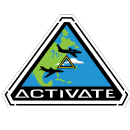
Aerosol Cloud Meteorology Interactions over the Western Atlantic ExperimentActive Dates: 8/13/2020 - 6/18/2022
DAAC: Atmospheric Science Data Center (ASDC)
DCOTSS
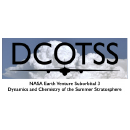
Dynamics and Chemistry of the Summer Stratosphere
Active Dates: 5/3/21 - 7/15/2022
DAAC: ASDC
IMPACTS

Investigation of Microphysics and Precipitation for Atlantic Coast-Threatening StormsActive Dates: 1/17/2020 - 3/1/2023
DAAC: Global Hydrometeorology Resource Center (GHRC DAAC)
Delta-X
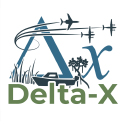
Active Dates: 3/26/2021 - 9/15/2021
DAAC: Oak Ridge National Laboratory (ORNL DAAC)
S-MODE
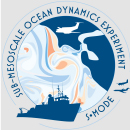
Sub-Mesoscale Ocean Dynamics Experiment
Active Dates: 10/19/2021 - 5/9/2023
DAAC: Physical Oceanography (PO.DAAC)
- EVS-2 Investigations
-
The table below contains the EVS-2 investigations and the assigned NASA DAAC that hosts the archived investigation data.
Investigation Description ACT-America

Atmospheric Carbon and Transport - America
Active Dates: 7/18/2016 - 7/27/2019
DAAC: ORNL DAAC
ATom
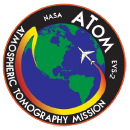
Atmospheric Tomography MissionActive Dates: 7/29/2016 - 5/21/2018
DAAC: ORNL DAAC
CORAL
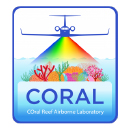
COral Reef Airborne LaboratoryActive Dates: 6/6/2016 - 5/28/2017
DAAC: Ocean Biology (OB.DAAC)
NAAMES
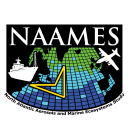
North Atlantic Aerosols and Marine Ecosystems StudyActive Dates: 5/5/2015 - 4/13/2018
DAAC: ASDC
OMG

Active Dates: 7/25/2015 - 4/15/2020
DAAC: PO.DAAC
ORACLES
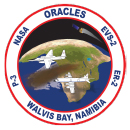
ObseRvations of Aerosols above CLouds and their intEractionS
Active Dates: 8/19/2016 - 10/27/2018
DAAC: ASDC
- EVS-1 Investigations
-
The table below contains the EVS-1 investigations and the assigned NASA DAAC that hosts the archived investigation data.
Investigation Description DISCOVER-AQ

Active Dates: 6/27/2011 - 8/16/2014
DAAC: ASDC
ATTREX
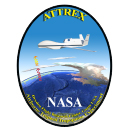
Airborne Tropical Tropopause ExperimentActive Dates: 10/20/2011 - 3/14/2015
DAAC: ASDC
HS3
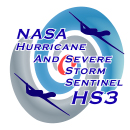
Hurricane and Severe Storm SentinelActive Dates: 8/28/2012 - 10/20/2014
DAAC: GHRC
CARVE
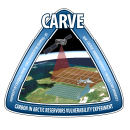
Carbon in Arctic Reservoirs Vulnerability ExperimentActive Dates: 5/23/2012 - 11/12/2015
DAAC: ORNL DAAC
AirMOSS
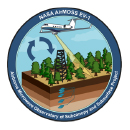
Airborne Microwave Observatory of Subcanopy and Subsurface ProjectActive Dates: 9/18/2012 - 9/29/2015
DAAC: ORNL DAAC
Research & Analysis
Research & Analysis (R&A) campaigns aim to answer detailed science questions in one or more of the NASA Focus Areas. The purpose of these campaigns is to address specific scientific research objectives for given research topics. R&A campaigns can be either small or large scale depending on the focus of the campaign. They typically last about a year. Funding for these campaigns can come from the NASA R&A program or Research Opportunities in Space and Earth Sciences (ROSES) solicitations.
Calibration/Validation
Calibration/Validation (Cal/Val) campaigns have a narrow focus on instrument and algorithm development and improvement. The main scientific objective of Cal/Val campaigns is enhancing instrument capabilities especially for satellite observations. These types of campaigns are typically smaller in size and last less than one year. Funding for Cal/Val campaigns are generally awarded through NASA Earth Science Project Office (ESPO), or via satellite mission funding.
Multi-Organizational/Regional
Multi-Organizational/Regional (Multi-Org) campaigns typically cover a smaller area of study over a short period of time with one or more organizations participating. To be included in CASEI, NASA must play a significant role and meet the definition of a significant participant. Multi-Org campaigns typically last less than a year and are more regionally-focused. NASA funding for Multi-Org campaigns generally comes from the NASA R&A program. Additional funding for these campaigns can come from other organizations such as NOAA and the National Science Foundation (NSF).
Facility Instrument
NASA uses the term facility instrument for airborne instruments or instrument/platform combinations that operate out of a NASA research center and support multiple science disciplines, field investigations, and NASA science objectives. Facility instruments are typically supported by NASA’s ESD Research and Analysis program and/or the Earth Observing System Project Science Office and are available to the NASA science research community via a request system. Investigators must include the cost for facility instrument operation in their funded field investigation budgets. The NASA Airborne Science Program typically coordinates requests for use of these instruments to participate. In many cases, all data from a facility instrument are archived together at one NASA DAAC. Facility instruments are included in the ADMG inventory, both as contributing instruments to field investigations and as specific facility instrument collections that include all flights for that instrument as one collection assigned to a DAAC.
Major Airborne Instrument
The term Major Airborne Instrument (MAI) is used to identify instruments or instrument/platform combinations that are used frequently in various campaigns or flight activities. For the benefit of users, the data are best archived as a collection of flights, with different flight ranges applicable to different campaigns and purposes. The funding mechanism and utilization of major airborne instruments is different from that of Facility Instruments. To have a major airborne instrument participate in an investigation, the listed principal investigator (PI) of that instrument must be an investigation-funded collaborator. MAIs may be thought of as a facility instrument by scientists in the NASA Earth Sciences community who may not be entirely sure what a facility instrument is. The ADMG keeps a list of approximately 15 instruments that fit this category. However, there is no official list of major airborne instruments that is agreed upon.
